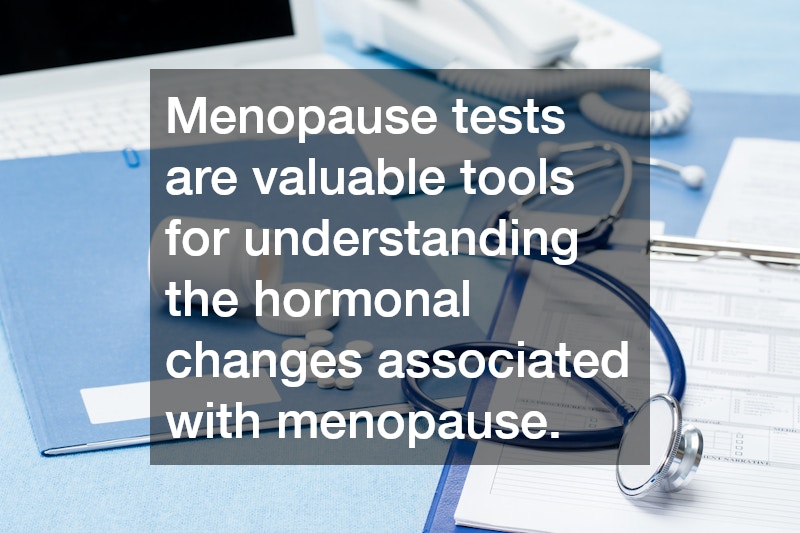
Understanding menopause tests is crucial for those approaching or going through menopause. These tests can provide valuable insights into the hormonal changes occurring in the body. In this article, we will explore the most common questions about how menopause tests work and what they can reveal.
What is a menopause test?
Definition and Purpose
A menopause test is a diagnostic tool used to assess hormonal changes associated with menopause. Its basic purpose is to aid in diagnosing menopausal status by evaluating hormone levels.
Primarily, these tests focus on measuring levels of follicle-stimulating hormone (FSH) and estradiol, both of which fluctuate significantly during this transitional phase. Accurate measurement of these hormones can help pinpoint where an individual is in the menopause transition.
Beyond just diagnosis, menopause tests can contribute to planning treatment options for managing symptoms effectively. They are a gateway to understanding more about one’s reproductive health as estrogen levels decline.
Types of Menopause Tests
Several types of menopause tests are available, including blood tests administered by healthcare professionals. Blood tests typically measure hormone levels that change during menopause, such as FSH, estradiol, and luteinizing hormone (LH).
In addition to blood tests, there are also home test kits that allow individuals to check their hormone levels from the comfort of their home. These kits often test urine levels instead of blood and can indicate if a person is approaching menopause.
While both types of tests aim to provide insights into menopause status, each has its advantages and complexities. Understanding these differences can help individuals decide which option might suit them best.
When should you take a menopause test?
Symptoms Indicating the Need for Testing
Women experiencing common symptoms such as irregular periods, hot flashes, night sweats, or mood changes may find menopause testing beneficial. These symptoms often indicate significant hormonal fluctuations.
Personal factors such as the family history of early menopause may also prompt a woman to seek testing earlier. Additionally, unnatural cessation of menstruation could warrant a test to eliminate other medical causes.
Optimal Timing for Testing
The optimal timing for menopause testing can differ based on individual symptom patterns and life stages. For reliable results, testing during symptomatic phases can capture the fullest extent of hormonal change.
Many women find testing most fruitful when periods become noticeably irregular or monthly cycles are absent. As a rule, testing when symptoms like hot flashes intensify tends to offer clearer hormonal insights.
What do the results of a menopause test mean?
Interpreting Hormone Levels
Results from menopause tests often focus on hormone levels, specifically FSH and estradiol. High FSH levels combined with low estradiol typically suggest menopause or perimenopause.
Different hormone levels indicate varying stages of menopause, with early stages marked by fluctuating FSH and later stages by higher, steadier levels. This differentiation helps track the menopause transition over time.
Next Steps After Receiving Results
After obtaining results, discussing them with a healthcare provider can offer valuable insight into their implications. This professional guidance assists in making informed health decisions, including lifestyle changes or treatment.
Considerations might include adopting diet and exercise adjustments to manage both symptoms and long-term health risks. In some cases, pursuing medical treatments, such as hormone therapy, may be recommended.
Can menopause tests be done at home?
Overview of Home Testing Kits
Home menopause testing kits offer a private, convenient option for checking hormone levels. These kits typically involve testing urine samples for comparison against typical hormone levels seen in menopause.
Available widely, home test kits promise quick results, often requiring just a few minutes for processing at home. They can be a useful first step for anyone suspecting menopause-related changes.
Pros and Cons of Home Testing
Home menopause tests offer advantages such as privacy and ease of accessibility, allowing women to explore their menopause status without a healthcare appointment. They provide a cost-effective first step toward further diagnosis.
However, the limitations include variability in accuracy due to individual hormonal fluctuations and potential misinterpretations without professional oversight. Lack of comprehensive insight means these tests are best supplemented with professional guidance.
Final Thoughts
Menopause tests are valuable tools for understanding the hormonal changes associated with menopause. While they provide crucial information, it’s important to consider their accuracy and limitations. Discussing results with a healthcare provider can lead to better management of menopausal symptoms and overall health.
.

